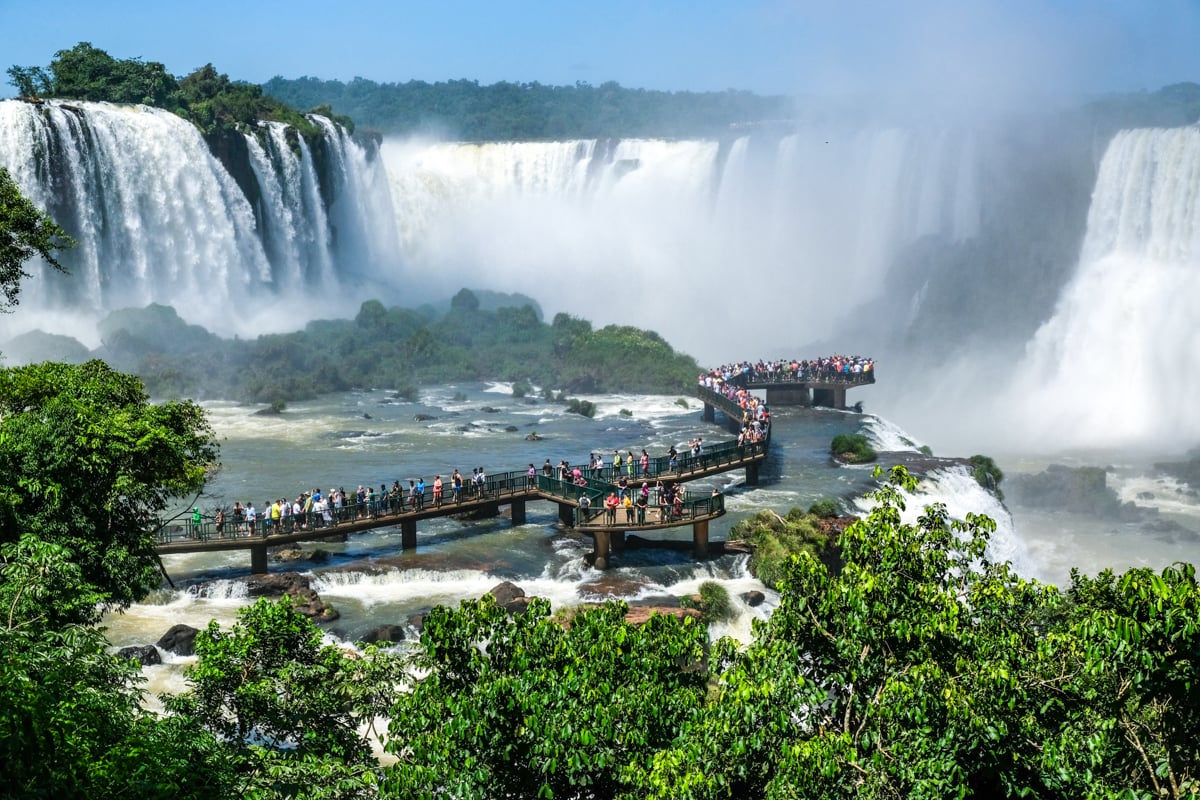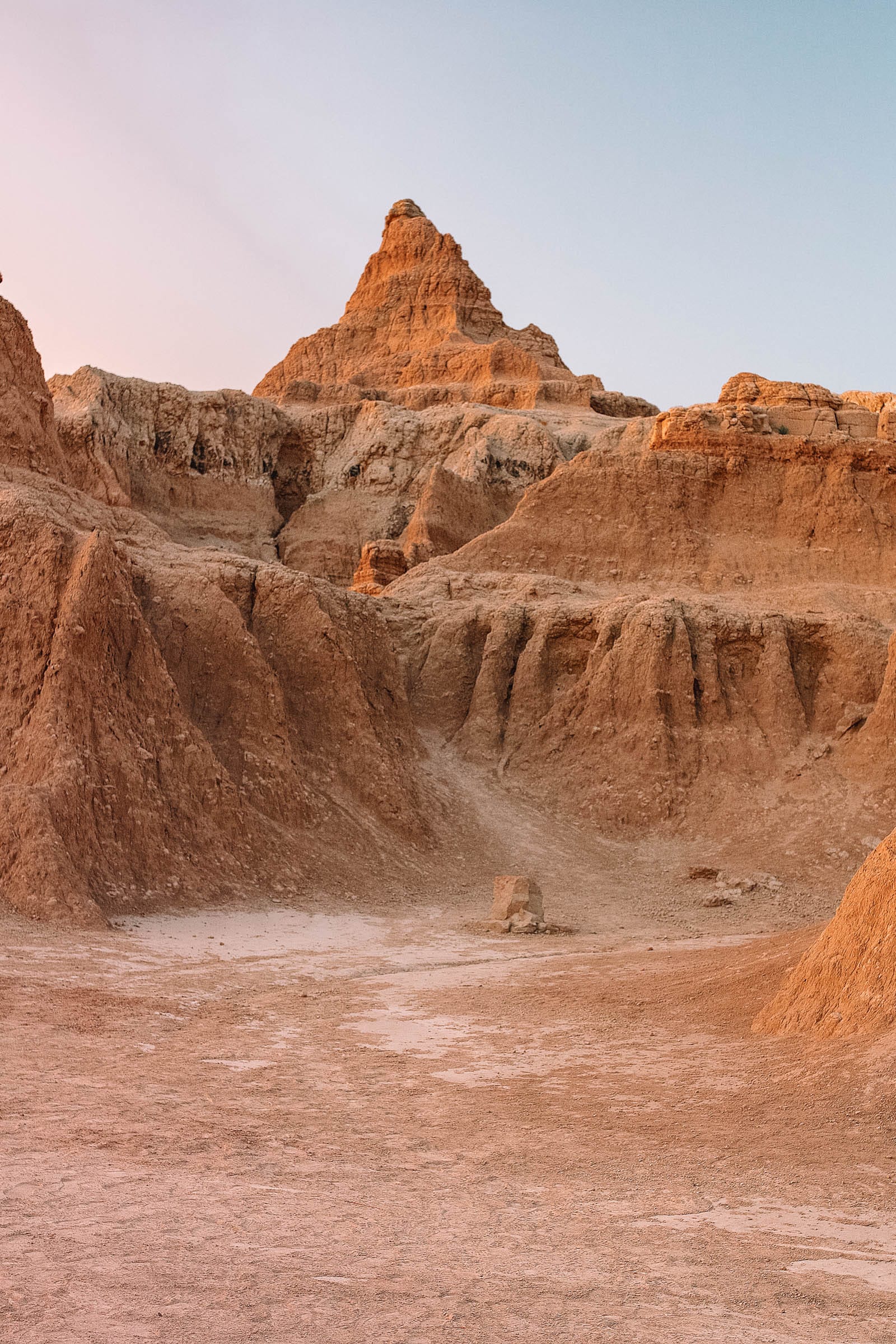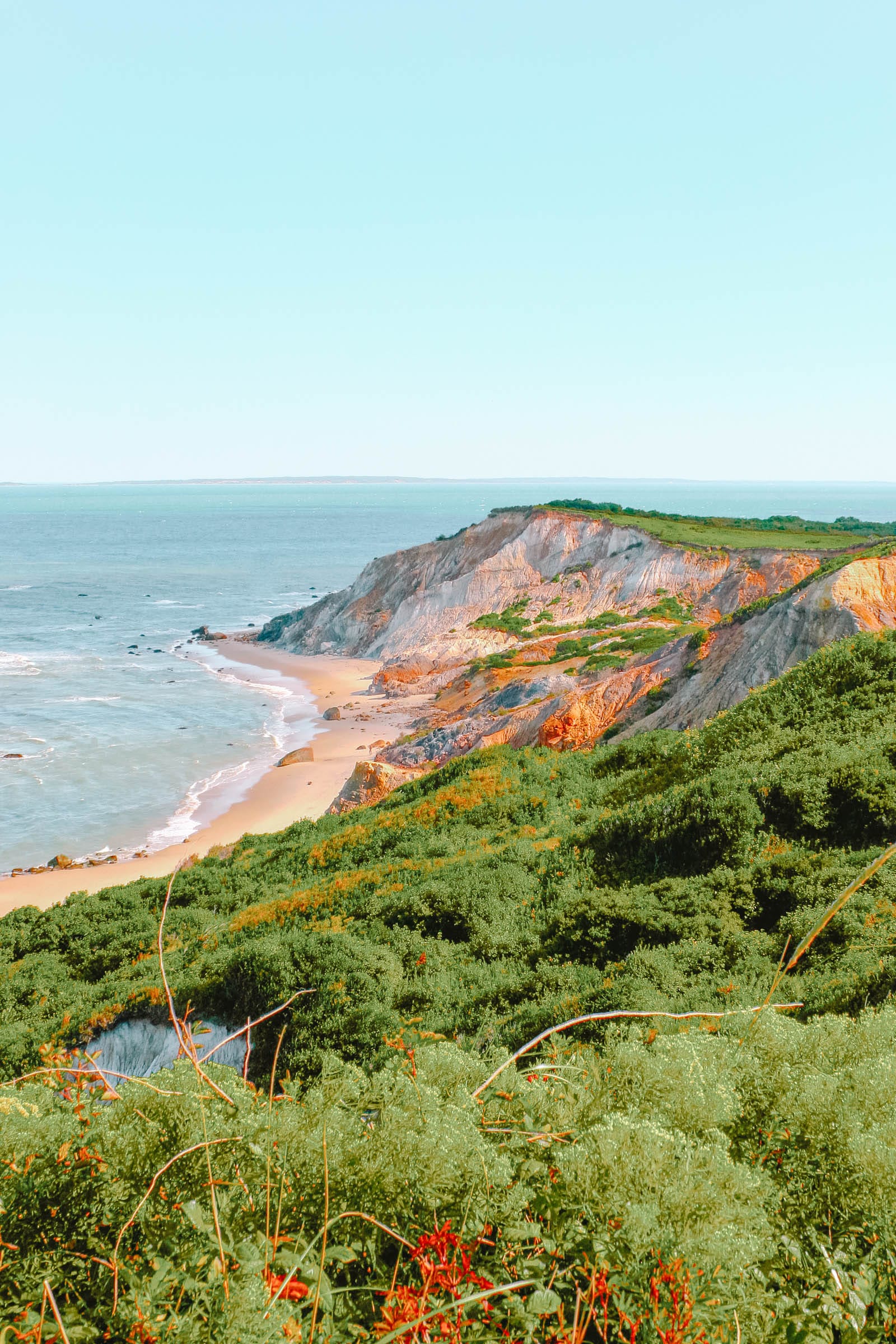Summary
- Where Is Iguazu Falls?
- How To Get To Iguazu Falls Argentina & Brazil
- Best Iguazu Falls Tours
- Iguazu Falls Argentina Side: What To Expect
- Iguazu Falls Brazil Side: What To Expect
- How Much Time To Spend At Iguazu Falls
- What To Bring To Iguazu Falls
- Best Time To Visit Iguazu Falls
- Iguazu Falls Argentina vs Brazil: Which Side Is Better?
- Fun Facts About Iguazu Falls
- Is Iguazu Falls Worth It?
Iguazu Falls is one of the world’s most spectacular and impressive waterfalls, straddling the border between Argentina and Brazil in South America.
With more than 275 individual cascades, Iguazu is actually the biggest waterfall system in the world! The closest comparison is probably Niagara Falls, although Iguazu Falls outshines Niagara by most measurements.
This spectacular waterfall is part of a national park in both Argentina and Brazil, and both sides are well worth a visit as they offer different perspectives! You can see the best highlights of Iguazu in just a couple of days, although you could easily spend longer enjoying the breathtaking scenery.
This travel guide will explain how to get to Iguazu Falls from the Argentina or Brazil side (with or without a tour), provide a map of the falls, and share some fascinating facts about this natural wonder!
Where Is Iguazu Falls?
Iguazu Falls is located on the border of Argentina and Brazil, in the continent of South America.
There are towns and airports on both sides of the border, with plenty of tourist-friendly hotels and restaurants, making it easy to go back and forth between the two countries to experience both sides of the waterfall.
The town on the Argentine side of the falls is called Puerto Iguazu, while the Brazil side is called Foz do Iguacu.

How To Get To Iguazu Falls Argentina & Brazil
The main way to reach Iguazu Falls is by flying from one of the major cities in Argentina or Brazil.
From Argentina, you can fly from Buenos Aires to Puerto Iguazu airport (IGR), which takes less than 2 hours and is offered by multiple airlines at reasonable prices. There are two airports in Buenos Aires (AEP or EZE), and you can use either to fly here.
If you’re in Brazil, you can take a flight from Sao Paulo or Rio De Janeiro to Foz do Iguacu airport (IGU), which takes about 2 hours. These routes are also available by multiple airlines with daily departures.

Once you arrive in Puerto Iguazu, you can get to the Argentina waterfall by bus, taxi, or tour. The bus is cheap, safe, and easy to use, with regular departures from the bus terminal in town to the waterfall and back.
However, if you prefer a more personalized and convenient experience, then a taxi or private tour can be an excellent option. You can ask the driver to wait for you while you explore the waterfall and then take you back to town afterwards.
The Brazil side of Iguazu Falls offers similar transportation options. You can reach the Brazil waterfall by bus, taxi, or tour, each depending on your needs and your itinerary.

Crossing the international border between Argentina and Brazil is easy; you can travel between both sides of the Iguazu waterfall by bus, taxi, or tour.
For example, I based myself on the Argentine side of Iguazu Falls but did a day trip to the Brazil side using the bus, and I also took a separate day trip to the Paraguay side by taxi.
As a US citizen, I didn’t need a visa for Argentina, Brazil, or Paraguay, making day trips simple. However, it’s essential to check the current visa requirements for your nationality in these countries to avoid any border challenges, and remember to bring your passport!

Best Iguazu Falls Tours
One of the most convenient ways to visit Iguazu Falls is through a day tour from Puerto Iguazu or Foz do Iguacu.
GetYourGuide offers highly-rated day tours to see Iguazu Falls on the Argentina side, with optional boat tours that allow you to experience the waterfalls up close. This is a fun way to admire the beauty of Iguazu Falls from a unique perspective.
For those visiting from the Brazil side, there are day tours to Iguazu Falls from Foz do Iguacu, which also include options such as boat tours and a visit to the bird park, with a trilingual guide and hotel pickup and drop-off included.
Iguazu Falls Argentina Side: What To Expect
Visiting Iguazu Falls is an extraordinary experience! The visuals of the waterfalls are simply mesmerizing.
The Argentina side of the falls is larger and more expansive than the Brazil side, divided into circuits that lead you to different viewpoints. The highlights include the upper circuit, lower circuit, and the Devil’s Throat viewpoint, known in Spanish as ‘Garganta Del Diablo’.
The park has a network of walking trails and a free mini-train system, making it straightforward to navigate. You can choose to walk throughout the park, use the train, or take a combination of both modes of transport. There are benches and cafes available for resting along the way.
If you’re in good shape, I recommend walking the upper and lower circuits in the morning before utilizing the train to reach the Devil’s Throat viewpoint in the afternoon. This plan provides a thorough workout, yet it’s manageable within a single day.

As you wander through the national park, you may observe wildlife such as monkeys, coatis, crocodiles, turtles, and various birds, butterflies, and even spiders. If you’re fortunate, you might even catch a glimpse of a tapir.
Both circuits offer stunning panoramic views of the waterfall, but the Devil’s Throat viewpoint is the single most impressive sight on either side of Iguazu Falls.


• Entrance Fee (Argentina)
Iguazu Falls is a national park in Argentina, so an entrance fee is applicable to access the park, covering the walkways and other activities such as boat cruises. Some tours may include the park fee in their pricing.
The current entrance fee can be found on the Argentina national parks website. Notably, if you visit two days in a row, the second day ticket price is reduced by 50 percent, so keep your ticket for the discount.
Payments are accepted via credit or debit card, or in local currency (Argentine Pesos). They also accept Brazilian Reals, US Dollars, or Paraguayan Guarani.
You can book your park tickets in advance, but since they are unlimited and never sell out, it’s unnecessary—ticket lines tend to be quick. However, consider booking the boat cruise in advance due to high demand.

• Opening Hours (Argentina)
The opening hours for the Argentina side are from 8 AM to 6 PM, with the last entry permitted at 4:30 PM, applicable year-round including holidays.
• Map (Argentina)
Here’s a handy map of the Iguazu Falls Argentina side that you can use to plan your trip. Click the map to view it in full size.
Signposted maps are also available throughout the national park to assist in navigating the trails and waterfall locations.
Iguazu Falls Brazil Side: What To Expect
The Brazil side of Iguazu Falls is slightly smaller and simpler than the Argentina side, yet it still boasts numerous spectacular views and activities.
The park features one main pathway that runs along the river, concluding at an exhilarating balcony near the edge of the falls, alongside several platforms that offer vantage points from above.
The park in Brazil is organized in a loop, including a free bus service that transports you from the entrance to either end of the park and back, resulting in a shorter and more efficient visit compared to the Argentina side.


I enjoyed the Brazil side of Iguazu Falls; although it may not match the breathtaking Devil’s Throat viewpoint in Argentina, it remains incredibly photogenic. Skipping this side of Iguazu would be a missed opportunity!
After exploring the Brazil side of Iguazu Falls, consider visiting the nearby Parque Das Aves, a bird park featuring many notable South American birds like colorful macaws and toucans. The ticket is separate from Iguazu Falls, and while slightly pricey, it is a worthwhile experience.

• Entrance Fee (Brazil)
You can find the current Brazil park fee on the official website here, where tickets are also available for advance purchase.
Like the Argentina side, advance bookings aren’t necessary as tickets are unlimited and never sell out.
At the entrance, tickets can be paid for with credit or debit cards, or the local currency (Brazilian Reals). Argentine Pesos, US Dollars, and Paraguayan Guarani are also accepted.

• Opening Hours (Brazil)
The Brazil side operates from 9 AM to 6 PM daily, and the last entry is also at 4:30 PM.
• Map (Brazil)
Here’s a map of the Iguazu Falls Brazil side to facilitate your exploration of this magnificent area. Click the map to view it in full size.
How Much Time To Spend At Iguazu Falls
To fully experience both sides of Iguazu Falls, you will need two full days: one day for Argentina and one for Brazil. The Brazil side can be explored in half a day if you choose to skip the bird park.
Having a third day offers flexibility with the weather and allows you to revisit either national park or take a day trip to Paraguay to see the Monday Falls (the Saltos Del Monday waterfall).
If you’re pressed for time, visiting both sides in a single day is possible, although utilizing a guided tour can expedite border crossings and streamline logistics.

What To Bring To Iguazu Falls
- Clothing: The climate is tropical, making it hot and humid year-round. Dress for summer, with shorts and sandals being ideal.
- Sunscreen: As it can be quite sunny, it’s essential to have a hat and sunscreen. This is the only place I experienced a burn in Argentina.
- Rain Coat: Due to extreme mist and spray from the falls, especially near the Devil’s Throat, a poncho can help keep you dry.
- Bug Spray: While mosquitoes are not prevalent due to the noise and spray, some areas are calmer, so it’s wise to pack bug spray just in case.
- Vaccines: I received the Yellow Fever vaccine before my visit. Although recommended by the US CDC due to some presence of Yellow Fever around Iguazu, it is not a requirement by Argentina or Brazil.
- Camera: Both sides of the falls are exceptionally photogenic. A lens with some zoom capability is advisable, and for the Devil’s Throat viewpoint, a wide-angle lens is necessary.
- Passport: Don’t forget your passport if crossing the border. It’s not required in both national parks, but essential for border crossings.

Best Time To Visit Iguazu Falls
There isn’t necessarily a best time to visit as Iguazu Falls maintains a steady flow all year round. If you prefer cooler weather, the ideal time is from May to August, as these months have lower humidity and less rain, which is also great for observing rainbows at the falls.
Additionally, I visited during the wet season and experienced little rain; it was mostly sunny during the day with occasional evening showers that didn’t interfere with my plans.
Although the waterfalls have a stronger flow during the rainy season, the water can sometimes appear brown or muddy, which may not be ideal for photography.
To avoid some heat and crowds, the best time of day to visit is in the morning, as this popular tourist destination tends to get crowded by noon. However, photography opportunities are present throughout the day.


Iguazu Falls Argentina vs Brazil: Which Side Is Better?
Determining which side of Iguazu Falls is better is a challenging question, as both sides are stunning.
The primary benefit of the Argentina side is its size and the extensive trails and walkways available for exploration. The Devil’s Throat viewpoint is arguably the most breathtaking feature of Iguazu.
Conversely, the Brazil side is more compact yet offers some unique scenery and stunning walkways. It’s often considered to be more photogenic than the Argentina side. Additionally, there’s a delightful bird park close to the entrance!
In summary, while I found the Argentina side slightly more impressive visually, the Brazil side may be better for capturing beautiful photographs. Both sides are absolutely worth a visit, and I recommend experiencing both if possible.
Fun Facts About Iguazu Falls
- How big is it?
Iguazu Falls is immense, being the largest broken waterfall system in the world with 275 individual cascades. Iguazu stands at heights ranging from 64 to 82 meters (210 to 269 feet) with a width of 2,700 meters (8,858 feet), boasting a mean annual flow rate of 1,746 cubic meters per second (61,600 cubic feet per second).
- How does it compare to Niagara Falls in Canada and USA?
The comparisons between Iguazu Falls and Niagara Falls are frequent due to both being iconic. Iguazu is larger in height and width, though Niagara possesses a greater flow rate.
- How does it compare to Victoria Falls in Zambia and Zimbabwe?
Iguazu Falls is also often compared to Victoria Falls, which is known as the biggest curtain of water globally. Although Victoria Falls is taller, Iguazu is wider due to its multiple distinct waterfalls.
- What is the source?
The Iguazu River originates in the Serra do Mar mountains of Brazil and stretches about 1,320 kilometers (820 miles).
- How did it get its name?
The name Iguazu is derived from indigenous Guarani words meaning ‘great water.’ It is pronounced as ‘ee-wasu’ or ‘ee-wazu’, although some variations exist.
- Is it a national park?
Yes, Iguazu is designated as a national park in both Argentina and Brazil, each side representing a separate park. The Argentine park is called Parque Nacional Iguazú in Spanish, while the Brazilian side is known as Parque Nacional Do Iguaçu in Portuguese.
- What is the UNESCO status?
The Iguazu National Park in Argentina has been recognized as a UNESCO World Heritage Site since 1984, and Brazil’s side has also been separately recognized by UNESCO since 1986, reflecting the outstanding natural significance and beauty of the area.
- Can you stay inside the national park?
Indeed, the Argentina national park features the Gran Melia Iguazu, while the Brazil side has the Belmond Hotel Das Cataratas. These accommodations offer a chance to stay inside the national park and be close to the falls.
- What other facilities are available?
Both national parks provide lockers for luggage storage in addition to an array of bathrooms, cafes, maps, and gift shops. While ATMs are present, they are not always reliable for cash withdrawals, but using a credit card for purchases is generally acceptable.
- How hard is it to get to Iguazu Falls?
Accessing either side of Iguazu Falls is quite simple. You can fly into towns on both sides and utilize them as bases for exploring both Argentina and Brazil with buses, taxis, or tours.

Other Tips For Puerto Iguazu / Foz do Iguacu Town
- Hotels: Numerous comfortable hotels and hostels are available in Puerto Iguazu (Argentina) and also in Foz do Iguacu (Brazil).
- Restaurants: An abundance of nice cafes and restaurants on both sides of Iguazu ensures you’ll find dining options without difficulty.
- Cash: You can withdraw cash at local bank ATMs, and sending yourself money via Western Union is also an option.
- Credit Cards: Most establishments accept credit cards, though some smaller places may be cash only, so it’s wise to carry some cash just in case.
- WiFi: Reliable, fast WiFi is typically available in hotels and restaurants across town.
- Cell Service: Cell service is generally good in town on both sides; however, some areas near the falls may occasionally lose reception.
- Safety: The Iguazu area is regarded as safe for tourists, yet it’s advisable to take standard precautions, such as not leaving valuables unattended.
Is Iguazu Falls Worth It?
Absolutely, Iguazu Falls is worth the visit!
Even though it may not be the most accessible location in Argentina or Brazil, this waterfall merits the detour. It ranks among the biggest and most impressive waterfalls globally.
If you’re traveling through South America, ensure to add Iguazu Falls to your list!
Is Iguazu Falls Open / Closed Right Now?
Yes, Iguazu Falls is currently open to tourists in both Argentina and Brazil! Both national parks welcome international visitors, and I will provide updates if that changes.
Although certain areas of the park may occasionally close temporarily for maintenance, they tend to reopen quickly. For current updates, check the official websites for Iguazu Argentina and Iguazu Brazil.
Happy travels!
More South America Travel Tips
Thanks for reading! I hope you found this map and travel guide for Iguazu Falls in Argentina and Brazil helpful.
Don’t forget to explore my other travel blog posts on Argentina and South America.




